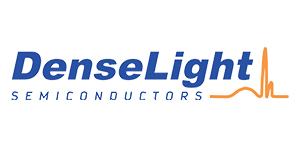In the rapidly evolving world of telecommunications and data transmission, performance, efficiency, and scalability are paramount. Enter HybridXwave, our innovative photonic packaging concept that revolutionizes the integration of Low DOP L-Band SOAs with LDOP packaging—delivering unprecedented cost-performance advantages over traditional EDFAs.
HybridXwave represents a forward-thinking approach to packaging where spatial optimization, temporal synchronization, and hybrid integration coalesce to create a robust, efficient, and scalable photonic platform.
Why HybridXwave Outperforms Traditional Solutions
Enhanced Performance and Reliability
HybridXwave harnesses the power of native hybrid packaging to combine photonic and electronic components into a unified, highly efficient system. By minimizing optical losses, parasitic effects, and improving thermal management, this packaging ensures superior performance in high-speed, high-capacity optical networks. The Low DOP L-Band SOA, integrated within this hybrid system, provides stable amplification, lower noise, and enhanced signal quality—key for demanding telecom applications.
A Compelling Cost-Performance Quotient:
What sets HybridXwave apart is its ability to provide a better cost-performance ratio than traditional EDFAs. With its streamlined, integrated design, HybridXwave reduces manufacturing complexity and operating costs while maintaining high flexibility. This positions it as the ideal solution for telecom operators looking to maximize performance without sacrificing efficiency or affordability.
Elegant, Space-Saving Photonic Packaging
Spatial Optimization
Inspired by the building-block principles of LEGO, HybridXwave utilizes the concept of Optical Circuit Building (OCB)—an intricate 3D arrangement of photonic components such as waveguides, amplifiers, and optical sources that maximize spatial efficiency. By carefully aligning these elements, HybridXwave minimizes signal loss and optimizes light flow, creating a compact, high-density solution perfect for space-constrained environments like data centers and telecom racks.
Temporal Synchronization
In high-speed networks, timing is everything. HybridXwave ensures that light signals propagate through the system in perfect harmony, coordinating the timing and sequencing of amplifiers, modulators, and delay lines. This level of precision ensures consistent signal integrity and synchronization across the entire system, much like how LEGO pieces fit together to form a cohesive structure.
Hybrid Integration for Superior Functionality
HybridXwave excels at blending photonic, electronic, and thermal components into a single, elegant system. By integrating active alignment techniques with passive photonic elements, this packaging achieves a high level of precision and functionality. This hybrid approach not only improves performance but also allows for enhanced flexibility in adapting to different photonic applications.
A Marketing Edge That Speaks to Tomorrow's Needs
Scalability and System Interoperability
HybridXwave's modular design is forward-thinking, allowing easy upgrades and future expansions without the need for complete redesigns. This interoperability makes it a scalable solution that grows with the needs of modern telecom infrastructures. Just like adding a new piece to a LEGO set, future components can be seamlessly integrated into the system.
Lower Total Cost of Ownership (TCO)
HybridXwave reduces the total number of discrete components, assembly steps, and interconnects by combining multiple functionalities into a single package. This results in lower manufacturing costs, reduced points of failure, and fewer maintenance needs, translating into a lower TCO. It offers a long-term, economically sound solution for both short- and large-scale deployments.
Smart Thermal Management for Long-Term Reliability
Thermal management is critical in environments where variable or extreme temperatures can degrade performance. HybridXwave integrates advanced thermal management solutions directly into the packaging, ensuring efficient heat dissipation and stable operation across wide wavelength ranges. This leads to longer component lifespans and increased reliability, making HybridXwave the perfect choice for high-performance telecom and datacom applications.
________________________________________
HybridXwave, with its sophisticated approach to photonic packaging, stands at the intersection of performance, flexibility, and cost-efficiency. By adopting concepts of Optical Circuit Building, it ushers in a new era of photonic design—one where compact, scalable, and elegant solutions meet the high demands of modern optical networks.
Cross-Platform Compatibility: Our "X" represents our cross-platform and cross-application versatility, whereby our coherent and discrete technology can be designed, assembled and integrated to work across multiple systems, platforms, or environments—highlighting our flexibility and integration.
X2-Our Assembly techniques excel in maximum design effectiveness for (Spatial and Temporal Integration): The "X" uniqueness in design symbolizing how our packaging system aligns and coordinates components along multiple dimensions, both spatially and temporally. This gives us the edge in precise spatial alignment and temporal synchronization for photonic packaging. This concept is especially critical in high-speed and high-precision photonic systems, such as those used in optical communication, LiDAR, sensing,
Show full description +
